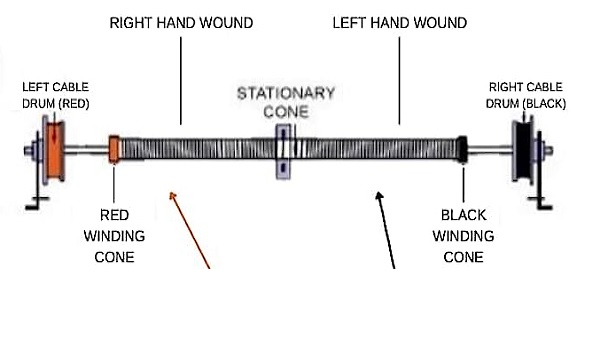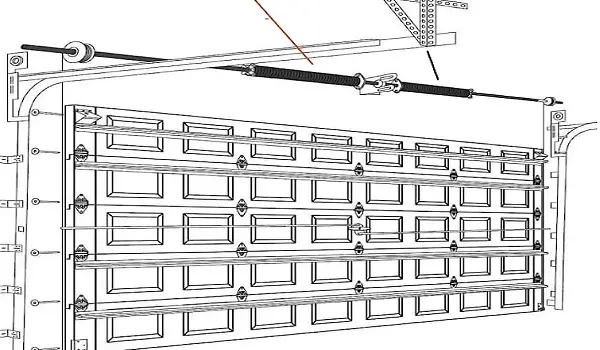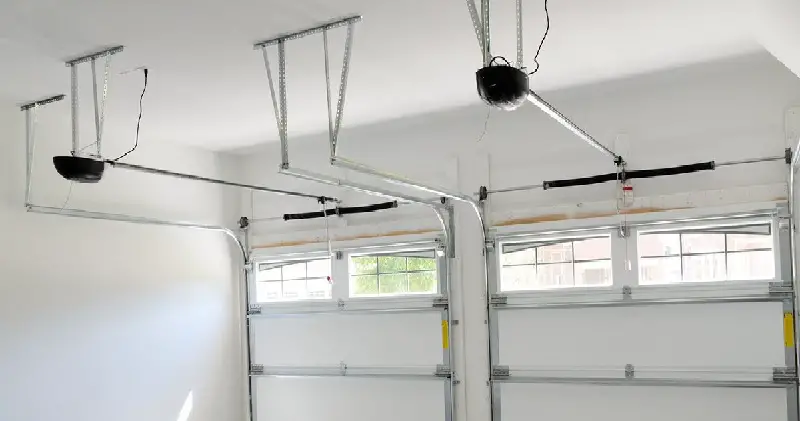Garage doors play a crucial role in the security and functionality of our homes. One important component of a garage door is the torsion spring, which counterbalances the weight of the door and allows for smooth opening and closing.
When it comes to selecting the right torsion spring for the garage door, understanding the door height and its corresponding spring chart is essential.
In this article, we will delve into the topic of garage door torsion springs, discussing their importance, how to determine the appropriate number of turns, and safety considerations when replacing them.
Introduction
Garage door torsion springs counterbalance the weight of the door, making it easier to open and close. These tightly wound springs store mechanical energy and release it when the door is in motion, reducing the strain on the garage door opener and the entire system.
The Significance of Garage Door Torsion Springs
Garage door torsion springs are vital components that ensure the smooth and controlled movement of the door.
Without them, the door would be incredibly heavy and challenging to operate manually. These springs assist the garage door opener in lifting the door, reducing the risk of motor strain and premature wear.
Understanding the Door Height Garage Door Torsion Spring Chart

To determine the appropriate number of turns for your garage door torsion spring, it is crucial to consider the door’s height. Here is a chart that provides a general guideline for the number of turns based on the door’s height:
| Door Height | Number of Turns |
|---|---|
| 7 feet | 28 turns |
| 8 feet | 32 turns |
| 9 feet | 36 turns |
| 10 feet | 40 turns |
| 11 feet | 44 turns |
| 12 feet | 48 turns |
Please note that this chart is based on the standard number of turns for a .250-inch wire spring. If your spring has a different wire size, adjustments may be necessary.
It is always advisable to consult with a qualified garage door technician to determine the correct number of turns for your specific door.
Factors Influencing the Number of Turns

While the door’s height is an essential factor, other variables can influence the number of turns required for your garage door torsion spring.
These factors include the spring size, weight of the door, cable drum configuration, and the presence of any additional hardware.
Consulting a professional technician ensures precise calculations and optimal performance.
How to Measure Door Height
To accurately measure the height of your garage door, follow these steps:
- Close the door completely.
- Measure from the floor to the top edge of the door using a tape measure.
- Round the measurement to the nearest inch or centimeter.
Read Also:
How to Measure Garage Door Torsion Springs
Determining the Right Torsion Spring
Once you have the door height measurement, refer to the torsion spring chart provided by the manufacturer or a reputable supplier.
Locate the range that corresponds to your door height and note the recommended spring length, wire size, and strength.
Installation Considerations
When it comes to installing torsion springs, it is important to consider the following:
Seeking Professional Assistance
Torsion spring installation can be challenging and dangerous, as it involves handling high-tension springs. It is highly recommended to seek professional assistance from experienced technicians to ensure proper installation and minimize the risk of accidents.
Safety Precautions
If you decide to install the torsion spring yourself, take the necessary safety precautions. Use safety glasses, gloves, and follow the manufacturer’s instructions carefully. Be aware of the risks involved and proceed with caution.
Common Issues and Troubleshooting
Sometimes, garage door torsion springs may encounter issues that affect their functionality. Here are some common problems and troubleshooting tips:
- Issue 1: Door imbalance or difficulty opening/closing.
- Troubleshooting Tip: Check if the torsion spring is properly adjusted and balanced. Seek professional assistance if needed.
- Issue 2: Excessive noise during operation.
- Troubleshooting Tip: Lubricate the moving parts of the garage door, including the torsion spring, with a suitable lubricant.
How often should torsion springs be replaced?

Torsion springs typically have a lifespan of around 10,000 cycles. Depending on the frequency of use, they may need replacement every 5-7 years.
Conclusion
Garage door torsion springs are essential components that ensure the smooth and controlled operation of your garage door.
Understanding their function, determining the appropriate number of turns, and adhering to safety precautions are crucial aspects of maintaining a functional and safe garage door system.
Remember, if you are unsure about any aspect of spring replacement, it is always better to seek professional assistance.


